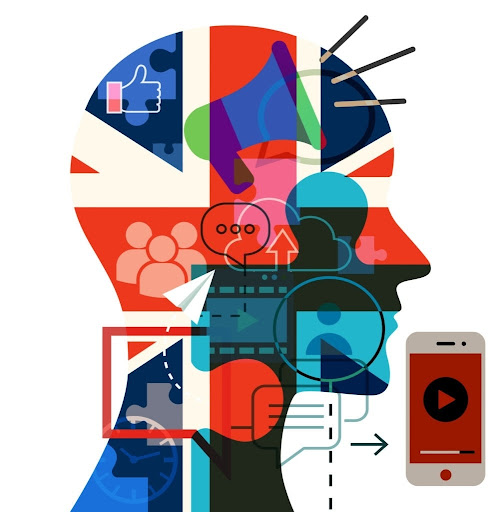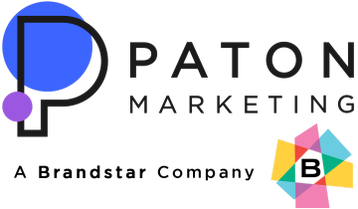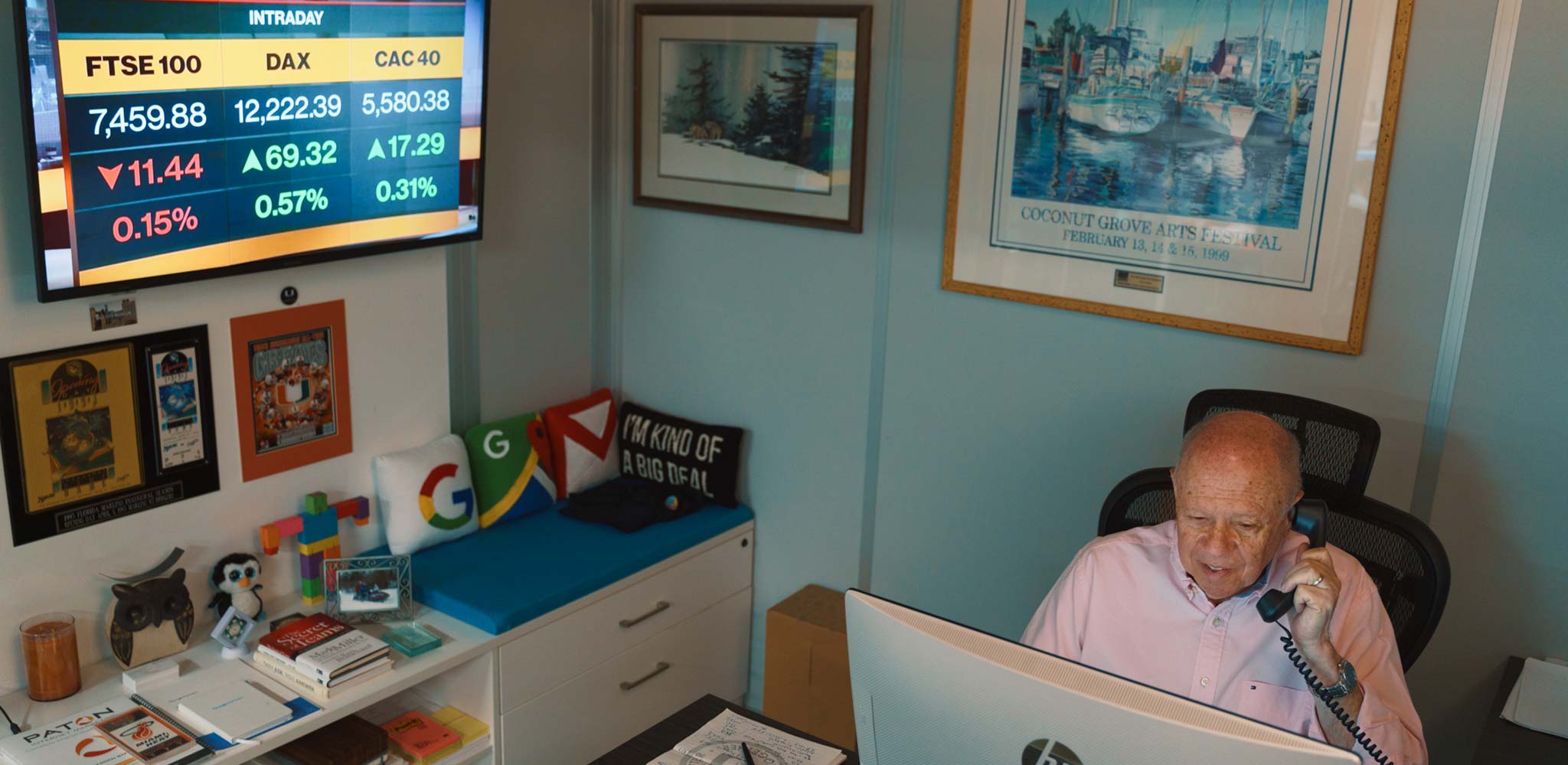An incredible amount of content is published every day on the web. 2.5 quintillion bytes of data are created every day, and nearly 7 million blog posts get published each day. With so much content making its way to the internet every day, how can brands ensure that their content is seen by the audience they covet. Getting your website on the first page of a Google search is not an easy task. 90.63% of the content on the internet gets no traffic from Google.
So, how can brands widen their reach? Online paid marketing is perhaps the fastest way to help prospects discover your brand. Paid marketing does not wait for your audience to find you. Instead, it uses advertising to target your coveted audience specifically.
Paid marketing offers an excellent ROI for many businesses. For every $1 they spend on Google Adwords, businesses get $2 in return. Local businesses do better on ROI with more location-intent queries. Such queries help websites ranked on the top of search engine result pages get the highest increase in click-through rate. Since 76% of marketers do not use behavioral data for online ad targeting, this approach could increase their exposure to new customers.
How to improve your reach with paid marketing?
Advertisements often seem pushy, which is why not many people like them. Irrelevant pop-ups that show up while browsing the internet can be a big turn-off for people. However, smart marketers can efficiently use paid marketing to expand their brand exposure. Paid advertising lets you measure your results and streamline your digital marketing efforts bringing in more revenue.

The following paid marketing hacks can help you improve your brand’s reach:
Use native advertising
Native advertising is using paid ads that match the form and function of the platform that they appear on. You may also know native advertising as “sponsored content.”
Banner-style ads are still popular on many websites, but users tend to largely ignore them. The average click-through rate of most banner ads is a mere 0.05%. Ad-blocking has also been on the rise for the past many years, which does not spell good news for such ads. But advertising works well in the “native” format. That could largely be because native ads do not look like ads. They do not disrupt a user’s reading experience, and so they do not get blocked. They appear on news sites and blogs, where viewers are bound to notice these ads. They do not scream advertising, and so they work.
Statistics show that consumers look at native ads 53% more than other display ads. With native ads, purchase intent increases by 18%.
Ad fatigue is real. People get bored after seeing the same ads and stop paying attention. However, native ads merge with the editorial content and do not tire out the audience. By using interesting and relevant content, native ads can be used to engage with customers while improving your brand’s exposure.
- Native ads increase a brand’s credibility
Becoming a credible online news source is difficult. You may offer great content consistently, but it may still take years for your business to achieve the golden combination of traffic and loyalty. With native advertising, you can use paid advertisements on other reputable platforms. You can, therefore, piggyback on their reputation. In fact, it could be a win-win situation for your brand as well as the platform that you are using. Well-done sponsored content can increase the credibility of the site that is hosting it. This, in turn, increases the credibility of the in-feed sponsored content.
If sponsored content is not your forte, consider working with a digital marketing agency for e-commerce South Florida.
Improve your quality score
Advertisements must be truly compelling to encourage visitors to click on them. How do you measure the quality of your advertisements? You use quality scores.
Quality scores help you determine the relevance of your advertisements for your target audience. It can be a useful tool to improve not only your ads but also keywords and landing pages. Brands should think of quality scores as an indicator of the areas to focus on to improve ad quality. It should not be viewed as a number that needs to be optimized.
Here’s how you can use your quality score to improve performance:
- Understand the components of your quality score
Brands should understand the three main components of quality scores:
- Expected click-through rate,which is how likely your ad is to be clicked when shown.
- Ad relevance, which is how closely your ad matches the internet search of a user
- Landing page experience, which is how useful and relevant your landing page is to users who click your ad.
By reviewing these components, you can decide whether you need to update your content or keyword selection. The main idea is to give your users what they are looking for and your ads will automatically start to perform better. The focus should be on improving user experience and long-term performance by using the quality scores as a tool.
- Make your ads relevant to the keywords they are targeting
The ad relevance component of your quality score can help you figure out how relevant your ad is to the keywords that they are targeting. You can try matching the text of your ad to the terms most searched by users. You can also try grouping your keywords into themes. The themes you use could be based on your products, services, or other categories. For instance, if your ad is about gold rings, you could use different groups of keywords such as “wedding bands” and “engagement rings.”
- Work to enhance your CTR
The click-through rate is an indicator of how likely people are to click your ad when they see it. If your click-through rate is not very high, you need to take measures to improve it. For instance, you could alter your ad text, making it more compelling for your target audience. Ensure that your ad content matches the keywords you are targeting.
You could also try other tactics, such as highlighting a unique benefit of your product or service. For example, you may offer free shipping or 24/7 service for the convenience of your users.
Ensure that your ads have a CTA (Call To Action). Anchor-text CTAs could potentially increase your conversion rate by 121%. When you use first-person phrasing on your CTA, such as “Start my free trial” instead of “Start your free trial,” you can increase your click-through rate by 90%. It is important to create a compelling CTA with words such as Find, Order, Buy, Sell, Browse, and many more.
- Update your landing page
Online paid marketing may be able to get more visitors to your website. However, it is even more important to ensure that users have an excellent experience on your website. It takes just 50 milliseconds for a user to decide if they like your website or not. 38% of consumers will not engage with your website if the layout is unattractive.
Use your landing page to give what your users are looking for. For instance, if a user has clicked on your ad for cotton shirts, the landing page they go to should feature cotton shirts. Ensure that there is consistent messaging in your ads as well as the landing pages. The landing pages should follow through on the ad’s CTA.
With more and more people accessing the internet through their smartphones, brands cannot undermine the power of a mobile-friendly website. 85% of people think that a company’s mobile website should be as good or even better than the desktop website. Ensure that your landing pages work well even on mobile devices.
Another important factor brands should look at is the loading speed of their websites. 47% of people expect a website to load in less than 2 seconds. By increasing the loading speed of your site from eight seconds to two seconds, you can increase your conversion rate by 74%.
- Use other metrics also
Other metrics like site engagement, conversion rate, and clickthrough rate can also help improve performance by helping you identify specific areas to improve. You can use the quality score as a filter so you know which areas to focus on. Start by looking at your high-performing keywords and with a quality score, you can identify which ones can do even better with changes to your landing pages and ads.
- Leverage Pay-per-click
Pay-per-click is a form of internet marketing where advertisers pay the publisher every time one of their ads is clicked. For the last two decades, Google Adwords has dominated the paid search arena. There are more than 3.8 million Google searches every minute across the world. Google Ads typically appear on search result pages on Google. You will mostly see these ads at the top of the page, and sometimes also at the bottom. Unpaid search results appear in between.
Text-based PPC ads look similar to organic results. You can know they are paid placements because of a small box that says “Ad.”
Now, if you want to appear on the top of a Google search page, you have to be at the top of your SEO game. It may take brands years to refine their SEO strategy and consistently appear among the top results of a Google search page. Paid advertising could help you achieve that in minutes.
PPC ads cater more to buyers than visitors who are simply browsing the internet. Search queries that have high commercial intent, that is, people who are actively looking to buy something click 50% more on sponsored listings.
Your PPC budget should be used to promote your most compelling stuff. Promoting content that includes actionable offers is more helpful in converting visitors to subscribers. You may want to analyze your website’s data to understand which offers have the highest engagement and conversion rates.
A PPC marketing campaign can be immensely beneficial to improve your CTR, reduce cost per conversion, and grow your list of targeted keywords. If you need help with a PPC marketing campaign, you should seriously consider hiring a PPC agency Miami.
- Use Facebook advertising
The potential reach of Facebook ads is 1.9 million users. 1.62 billion people visit Facebook every day. It is not surprising then that 93% of social media marketers use Facebook ads. By running paid ads on Facebook, you can guarantee that your posts get more eyeballs. Facebook ads are also highly targeted, making it easier to reach your target audience.
You also have the choice of selecting from several ad formats, including images, videos, carousels, and slideshows. Now that Facebook owns Instagram, some of the advertising options may also apply to Instagram.
The audience targeting capabilities of Facebook can be extremely useful in enhancing your brand’s reach. With Facebook ads, you can target specific users. These users could be a part of your mailing list or they may have taken some action on your website or social media pages.
You also have the choice of targeting a “lookalike audience.” A lookalike audience has similar behavior and characteristics as your existing customers. Facebook also lets you target your audience based on demographics or location. The connection targeting feature of Facebook helps you determine if you want your ads to be shown to people who may or may not be connected to your brand.
Facebook also allows you to choose where you want your ad to be placed. You can display your ads on Facebook, Instagram, or even on the audience network. You can also place your ads on Facebook Messenger. You can also choose if you want your ads to be displayed on desktop or mobile, or both.
An e-commerce Facebook ads agency Miami can be extremely helpful in helping you widen your brand’s reach through effective and compelling Facebook ads.
Conclusion
Paid marketing can be immensely effective in acquiring new customers and accelerating your business growth. For most businesses, Google and Facebook ads can deliver excellent ROI. Paid advertising is measurable and delivers instant results. Businesses that want to enhance their brand’s reach cannot afford to ignore online paid marketing.


Taren
Great post. I used to be checking continuously this blog and I’m inspired!
Very helpful information specifically the final section 🙂 I take care of such information a lot.
I was looking for this certain info for a long time.
Thank you and good luck.
Take a look at my web site – vpn coupon 2024
Karissa
This article will help the internet people for creating new website or even a weblog from start
to end.
my web blog vpn 2024
Buat akun gratis
Your point of view caught my eye and was very interesting. Thanks. I have a question for you.
Enriqueta
Great weblog right here! Also your site a lot up fast!
What web host are you the usage of? Can I am getting your associate link on your host?
I wish my site loaded up as quickly as yours lol
Take a look at my webpage :: facebook vs eharmony to find love online
Robby
Because the admin of this site is working, no hesitation very quickly it
will be well-known, due to its feature contents.
my blog: eharmony special coupon code 2024
Sidney
Fantastic beat ! I wish to apprentice even as you amend your web site, how can i subscribe for
a weblog website? The account helped me a appropriate
deal. I were tiny bit acquainted of this your broadcast provided vivid clear idea
Have a look at my page; nordvpn special coupon code 2024
Tiffanyt
Wonderful analysis! Your insights are very enlightening. For those interested in further details, here’s a link: DISCOVER MORE. Keen to hear your views!